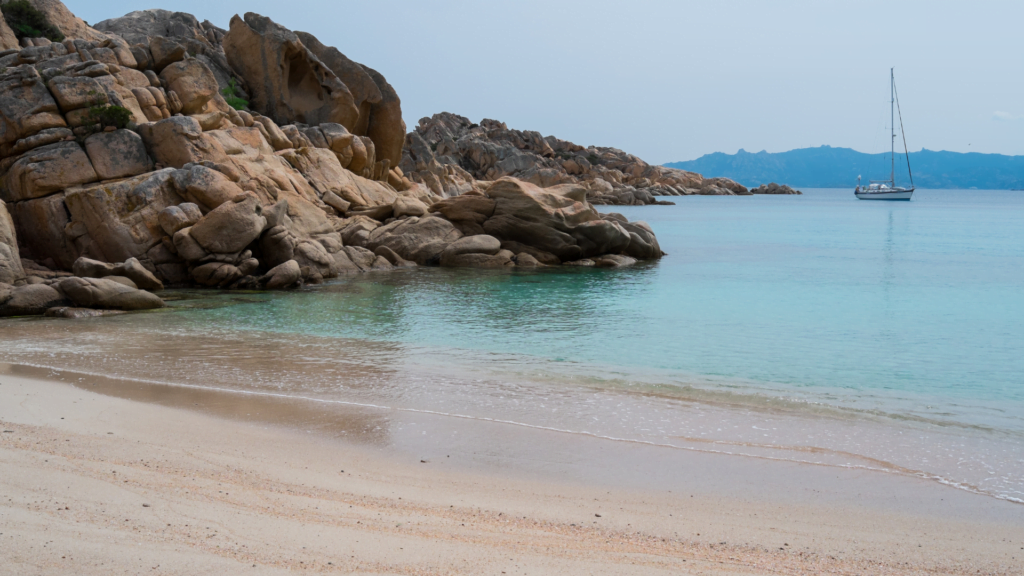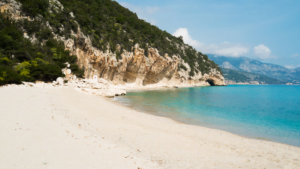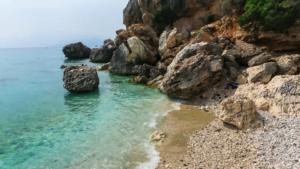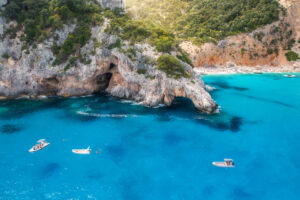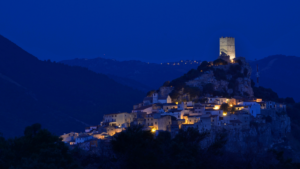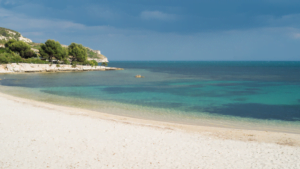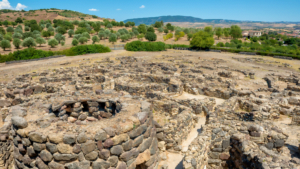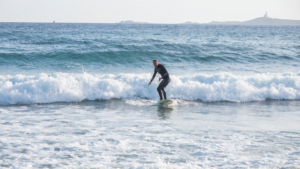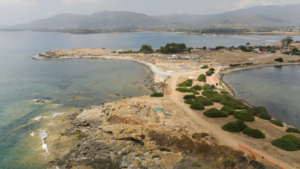Caprera Island, nestled within the enchanting Maddalena Archipelago off the northern coast of Sardinia, stands as a beacon of natural beauty and historical significance. Renowned for its crystalline waters, pristine sandy beaches, and rugged landscape,
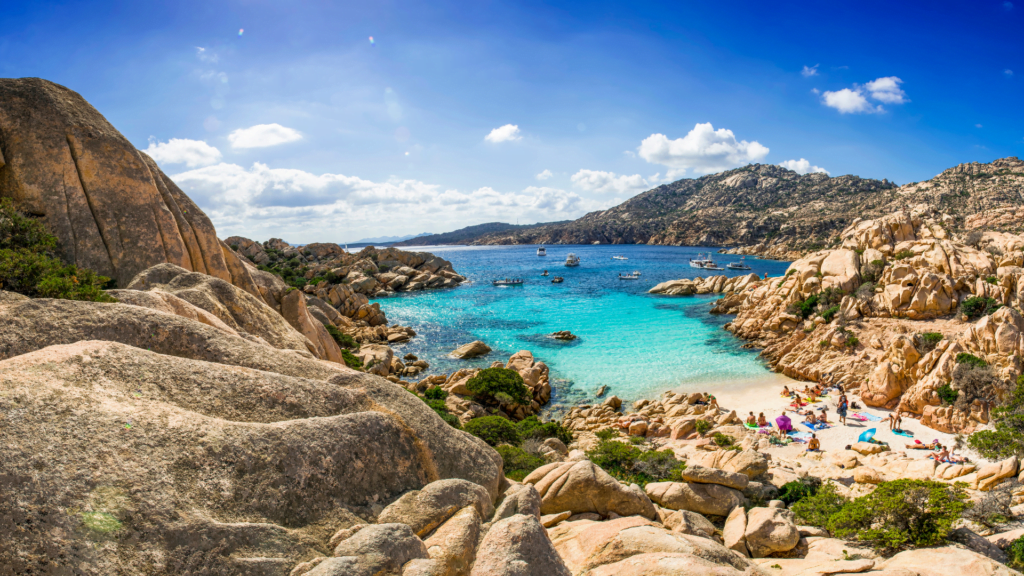
Caprera also holds a storied past that enriches its allure. This idyllic island is not only a haven for nature enthusiasts and beachgoers but also a profound historical site, famously serving as the final residence of Giuseppe Garibaldi, one of Italy’s most revered national heroes. The combination of its breathtaking scenery and the deep historical roots makes Caprera Island a unique and captivating destination, promising a rich and varied experience to all who visit.
The Best Beaches in Caprera
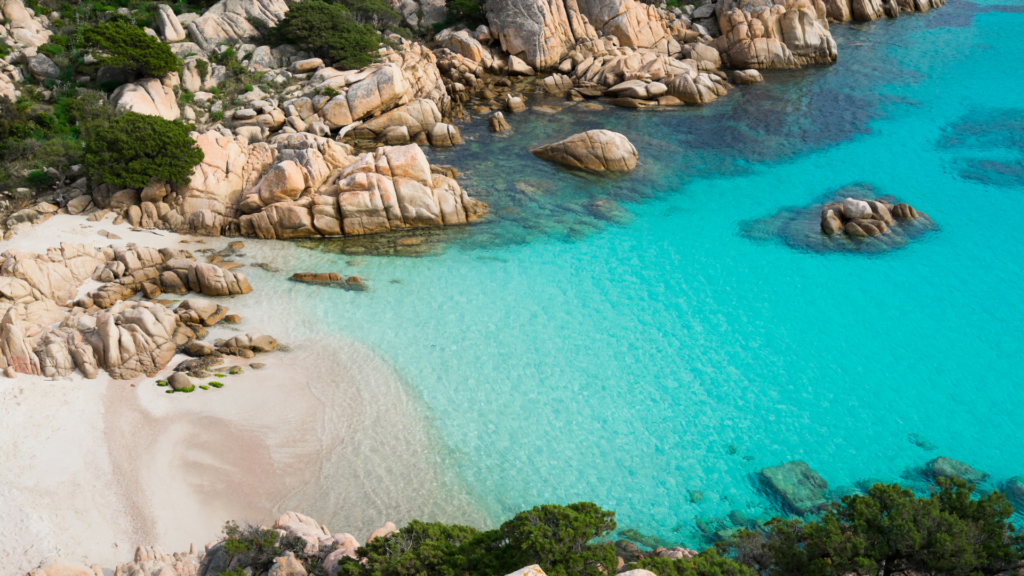

Caprera Island boasts some of the most spectacular beaches in the Mediterranean, each with its own unique charm and appeal. Here’s what makes each of these beaches special:
Cala Coticcio
Known affectionately as “Little Tahiti,” Cala Coticcio is famed for its stunning turquoise waters and fine, white sand, surrounded by rugged cliffs. This beach is accessible via a challenging hike or by boat, making it a secluded paradise for those who venture there. Its pristine beauty makes it a top choice for nature lovers and photo enthusiasts.
Spiaggia del Relitto
Spiaggia del Relitto is named after the shipwreck that lies just off its shore, making it an intriguing spot for snorkeling and diving enthusiasts. The beach itself features a mix of sand and pebbles, and its clear, shallow waters are ideal for families with children.
Cala Caprarese
Located on the western side of the island, Cala Caprarese is known for its dramatic rocky landscapes and the stunning views it offers of the sunset over the sea. This beach has a mix of sand and rocks, and the surrounding waters are teeming with marine life, making it excellent for snorkeling.
Cala Garibaldi
Cala Garibaldi is historically significant, as it was frequented by Giuseppe Garibaldi himself. This small, picturesque beach is lined with pine trees providing shade, making it a comfortable spot for picnics and relaxing under the Mediterranean sun.
Spiaggia dei Due Mari / Cala Portese
Also known as the Beach of the Two Seas, this unique location offers views of the waters splashing against both sides of a narrow strip of land. This natural phenomenon is not only beautiful to behold but also provides a rare experience of swimming between two marine environments.
Cala Napoletana
Cala Napoletana offers a more secluded atmosphere, nestled in a deep cove surrounded by high cliffs. The beach’s remote location ensures a peaceful setting, perfect for visitors looking to escape the busier tourist spots. Its crystal-clear waters are perfect for swimming and snorkeling.
Cala Andreani
Cala Andreani is distinct for its tranquil, shallow waters and soft sandy bed, which makes it especially appealing to families with small children. The beach is also accessible by car, which adds to its convenience for those not wishing to hike or take a boat.
Cala Brigantina
Cala Brigantina is a quieter, more intimate beach, ideal for those looking to relax away from the crowds. The surrounding cliffs provide a natural shelter, and the clear, calm waters make for excellent swimming and snorkeling conditions.
What To See And Do In Caprera
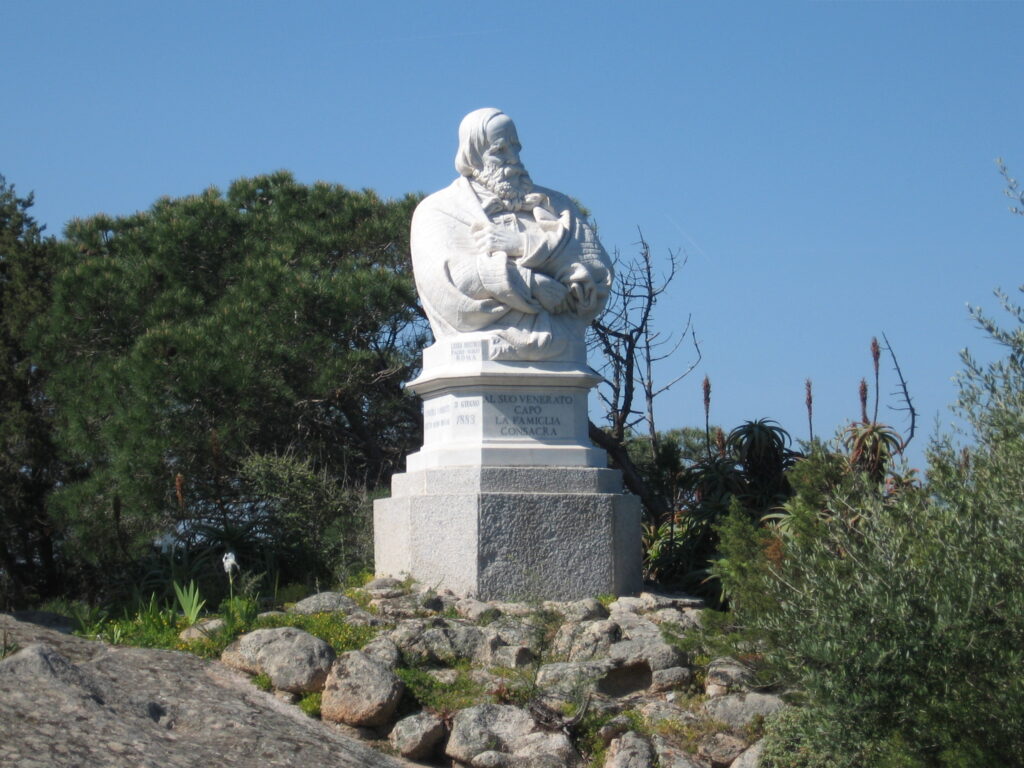

Caprera Island offers a wealth of attractions, combining its natural splendor with significant historical sites. Here are some must-visit spots for any traveler:
Go on a boat tour around the island
Exploring Caprera by boat provides a unique perspective of its stunning coastline and access to secluded coves and beaches that are otherwise inaccessible. These tours often include stops for swimming and snorkeling, allowing visitors to immerse themselves in the crystal-clear waters of the Mediterranean.
Garibaldi House Museum
This museum is dedicated to the life and times of Giuseppe Garibaldi, Italy’s celebrated national hero, and is situated in his former residence. After retiring from his revolutionary campaigns, Garibaldi lived in this house, which has been preserved to reflect his daily life and personal history. Visitors can explore various rooms filled with original furnishings and personal items, offering a tangible connection to Garibaldi’s profound legacy.
Memorial to Garibaldi
Close to Garibaldi’s residence, this memorial honors his immense contributions to the unification of Italy. It serves as a focal point for reflection on his enduring influence on Italian history and identity, providing insight into the man behind the myth.
Batteria Poggio Rasu Superiore
Overlooking the sea, the Batteria Poggio Rasu Superiore offers not only a glimpse into the island’s defensive past but also spectacular panoramic views, making it a prime spot for history enthusiasts and photographers alike.
Stagnali Museum
Located in the small village of Stagnali, this museum delves into the natural and cultural history of Caprera. Exhibits cover a wide range of topics, from the geological formations of the island to the various ecosystems that define its landscape, along with aspects of human settlement and historical use.
Fortificazione Candeo
Another significant military structure, Fortificazione Candeo, provides insight into the island’s role in regional defense strategies. This fort, less visited than others, offers a quiet exploration of Caprera’s military history enveloped by the natural beauty of its surroundings.
Hiking on Caprera Island
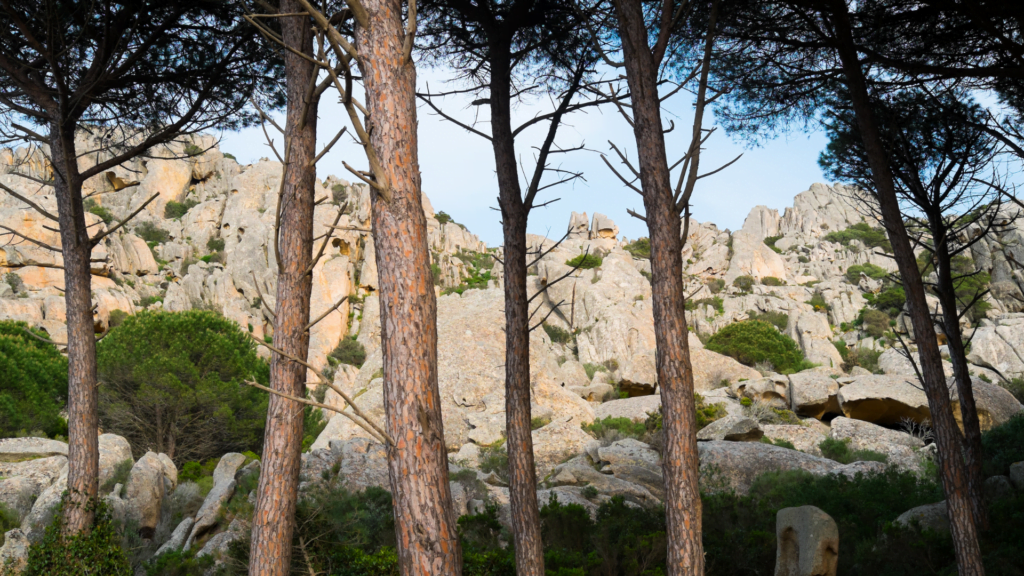

Caprera Island is a paradise for hikers, offering trails that cater to various fitness levels and scenic interests. Here are three recommended hikes:
Cala Coticcio Hike
Cala Coticcio is accessible via a challenging but rewarding trail. This hike is best suited for those in good physical condition, as it involves some steep sections and rough terrain. The path leads to one of the island’s most stunning beaches, known for its fine white sand and turquoise waters, making the effort well worth it.
Cala Garibaldi to Cala Napoletana Hike
This coastal trail connects two of Caprera’s beautiful beaches, Cala Garibaldi and Cala Napoletana. It’s relatively easy, making it suitable for families and less experienced hikers. The path offers excellent opportunities to enjoy the island’s flora and fauna along with spectacular sea views.
Mount Teialone Hike
For those seeking panoramic views, the Mount Teialone hike is ideal. It’s a moderate climb, less strenuous than the Cala Coticcio hike but still offering a good workout. From the summit, hikers are rewarded with sweeping views of the entire archipelago, making this a perfect spot for sunrise or sunset hikes.
Snorkeling and Diving in Caprera
Caprera’s clear waters and rich marine life make it a fantastic destination for snorkeling and diving. Here are some of the best spots:
Caprera’s Diving Centers
For those interested in deeper underwater exploration, several diving centers on the island offer guided dives to underwater caves and shipwrecks around Caprera and the nearby islands. These dives provide a chance to explore the rich underwater ecosystems and the historical artifacts resting on the seabed.
Cala Coticcio
Accessible by boat or through the aforementioned hike, Cala Coticcio is not only great for sunbathing but also for snorkeling. The clear waters and rocky seabed provide a home for a variety of marine life, including colorful fish and occasionally sea turtles.
Cala Brigantina
This secluded cove, less crowded than others, offers tranquil waters and abundant marine biodiversity, making it ideal for both snorkeling and more relaxed dives. The surrounding cliffs protect the cove, resulting in calm waters that are perfect for beginners.
Where is Caprera?
Caprera is an island located in the Maddalena Archipelago, which is part of the Maddalena National Park in northern Sardinia. It is situated in the Strait of Bonifacio, between Sardinia and the French island of Corsica. Caprera is the second largest island in the archipelago after La Maddalena. It can be reached by boat from La Maddalena, as well as by land via a bridge that connects the two islands.
Weather in Caprera
How to Get to Caprera
- From La Maddalena: Caprera is connected to La Maddalena, the largest island in the archipelago, by a causeway. Visitors can easily drive or bike across the Passo della Moneta bridge from La Maddalena to Caprera. If you are already on La Maddalena, this is the most direct and convenient way to reach Caprera.
- From Palau: To get to Caprera from the mainland of Sardinia, first, you need to take a ferry from Palau to La Maddalena. Ferries run frequently throughout the day and can accommodate both pedestrians and vehicles. Once you arrive in La Maddalena, you can proceed to Caprera by crossing the bridge mentioned earlier.
The Best Time To Visit Caprera
Visiting Caprera Island offers distinctly beautiful experiences across different seasons, each bringing its own charm and set of activities suited to the weather and natural setting.
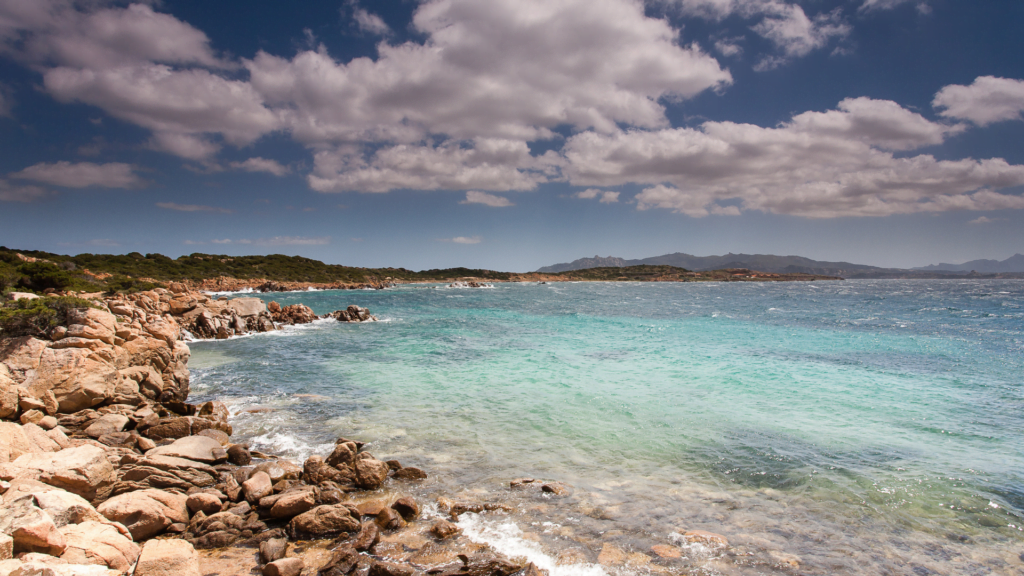

Spring (March to May): Spring on Caprera is a spectacle of nature, with the island bursting into a vibrant display of wildflowers and the lush greenery of Mediterranean maquis. The weather is pleasantly mild, perfect for hiking and exploring the island’s diverse trails without the heat of the summer. Birdwatchers and nature enthusiasts will find this season particularly rewarding as the wildlife, particularly birds, are active and visible. The sea remains a bit cool for swimming but offers refreshing dips for the more intrepid.
Summer (June to August): Summer is the peak tourist season and the best time for those looking to enjoy the island’s famed beaches. The weather is typically Mediterranean; warm and sunny, ideal for swimming, snorkeling, and boat tours. The island’s life thrives with visitors, and all tourist services, including tours and accommodations, are in full operation. However, it’s advisable to book in advance as the island becomes a popular destination during these months.
Autumn (September to November): As the crowds dissipate with the end of summer, Caprera becomes a tranquil haven once more, making it perfect for visitors seeking peace. The sea retains much of its summer warmth, making swimming pleasant and enjoyable well into the season. Hiking and cycling are particularly delightful as the temperatures cool and the landscape slowly transitions to the stunning colors of fall.
Winter (December to February): Winter on Caprera is quiet, with fewer tourists and a serene atmosphere. While the weather can be cooler and more variable, it is still mild compared to much of Europe. This season is ideal for those interested in cultural visits, such as exploring Garibaldi’s house or the island’s museums, without the distraction of summer crowds. Outdoor enthusiasts will appreciate the rugged beauty of the island’s natural landscape, which takes on a stark, compelling character in winter.
Each season on Caprera Island offers unique opportunities to experience its natural beauty and historical sites in different contexts, making it a year-round destination for diverse interests and activities.
The History Of Caprera
Caprera Island’s name is rooted in between of historical and linguistic connections. The word “Caprera” is believed to derive from “capra,” Italian for “goat,” an allusion to the wild goats that once roamed its rugged terrain. Some historians, however, suggest a more complex origin, tracing the name back to ancient languages where words like the Accadic “qabru” (meaning cavity or tomb) and similar terms in Aramaic, Hebrew, and Arabic point to the island’s early use as a burial site, marked by its numerous caves.
The island’s historical significance extends beyond its etymology. During the Roman era, Caprera served as a strategic outpost in the Tyrrhenian Sea, utilized both for its natural resources and as a naval base, hinting at a long history of human activity far preceding modern developments.
Most notably, Caprera is indelibly linked with Giuseppe Garibaldi, one of Italy’s foremost national heroes and a key figure in the Risorgimento, the movement for Italian unification. After his adventures and military campaigns across Europe and South America, Garibaldi chose Caprera as his final retreat. Purchasing half of the island in 1855, he built a simple house there, where he spent the last years of his life. This home, now the Garibaldi Compendium Museum, remains a pilgrimage site for those wishing to honor his legacy and reflect on his life’s work dedicated to the cause of Italian unity and independence.
Caprera, therefore, is not merely an island; it is a monument to its layered history, from ancient times through the Roman period and into the heart of Italy’s unification, anchored by the legacy of Garibaldi. It stands as a proof to the enduring spirit of freedom and resilience that characterizes the Italian narrative.
